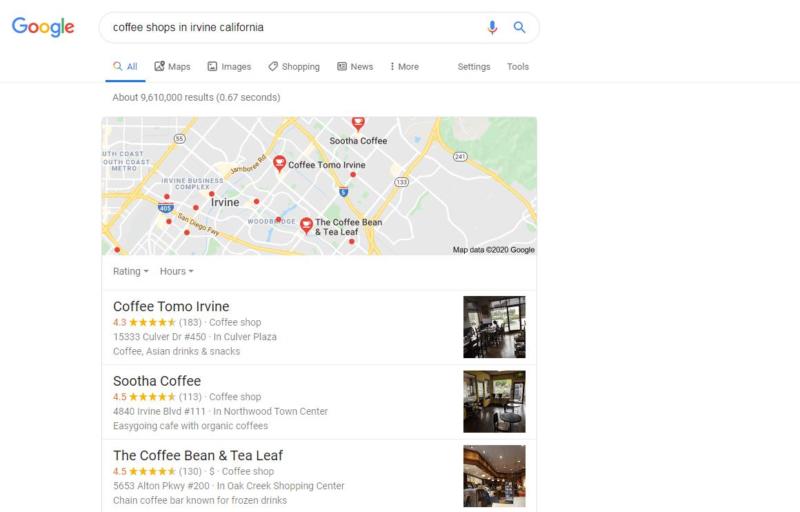- Jan 23, 2020
 0
0- by A2 Marketing Team
Google is making waves with its introduction of Bidirectional Encoder Representations from Transformers, or ‘BERT’ for short. Anything that brings changes to Google’s search engine is potentially significant. So what is BERT, and how is it going to impact Search Engine Optimization (SEO)?
Google has declared that BERT is its biggest change in five years. At its core, BERT should help Google better understand complex search queries, particularly when it comes to long-tail keywords. That alone may present fresh opportunities to optimize your content and make it more visible.
In this article, we’ll take a look at what exactly BERT is, and why the update is an important development. Plus, we’ll talk about how you can prepare your website’s content. Let’s get to work!
An Introduction to Google BERT
When it comes down to it, BERT isn’t that hard to grasp. Before BERT, when a user searched for something on Google, certain words were omitted from the search. This included conjunctions like “for” and “but,” as well as prepositions.
However, Google realizes that these words can affect the overall meaning of a search query. So it has created an algorithm to analyze how words are used, and how they relate to each other inside each query.
After all, “flights from Miami to New York” is a very different query from “flights from New York to Miami.” Before, Google could easily conflate the two by ignoring “from” and “to”. Now, the search engine aims to make searching more natural and offer accurate results, by taking into account how each word in a phrase relates to the others.
What Natural Language Processing (NLP) Is
Natural Language Processing (NLP) is another important concept to understand, since it plays an important role in BERT. It’s a form of artificial intelligence used to analyze language, which can help computers understand how people speak and form queries.
NLP has led to developments such as chatbots and suggested text on smartphones. The intention behind BERT is to apply those same techniques to search engines. With BERT, Google Search should gain a better understanding of the context behind user queries. That’s especially true for longer search queries, which can be more easily misunderstood due to the nuances of language.
Why Google Bert Is Necessary
BERT has been a long time coming. Every year, Google makes thousands of changes to its search algorithms. Most of these are so small that users don’t notice, but they do occasionally stir up commotion. People often worry that their search rankings will drop with new updates, but Google’s goal is to improve the user experience.
As it stands, search algorithms are too simple to truly understand many complicated queries. That’s a problem for Google, but it’s also an issue for website owners. The more niche your subject matter is, the harder it can be for audiences to find your site.
By better understanding the nuances of language, Google can connect searchers with the content they seek more accurately. This is excellent news for anyone trying to raise their search rankings.
How to Prepare Your Website for Google BERT (4 Key Techniques)
Search rankings are important for website owners, which is why it’s vital to have the right strategy in place. BERT will likely affect search rankings, but the good news is that your approach won’t have to change too much. Let’s take a look at what you can do to improve your chances of ranking high for relevant search queries moving forwards.
1. Keep Your Keywords Simple and Conversational
Currently, best keyword practices involve mixing long-tail phrases of three or more words with shorter keywords. BERT is likely to impact the current trend of peppering your chosen keywords throughout your content, by prioritizing tight, conversational pieces.
This means that your content should have a clear goal. You’ll want to provide genuine information in a way that sounds natural, rather than focusing on keyword density.
As BERT’s analysis of language improves, so too should its abilities. For example, it should be better able to determine when a blog post has something valuable to say, and when it’s just a list of keywords. So it’s best focus on creating genuine content that’s designed to help your audience, and let the keywords flow naturally.
2. Cluster Information With Long-Tail Keywords
While content quality is the number-one priority, BERT will make long-tail keywords more relevant than ever. When people use Google, they aren’t typically thinking about relevant keywords. They’re looking for answers to questions, recipes, directions, and advice.
For example, someone looking for a coffee shop near a specific location will want their query to produce relevant information:

Google’s goal is to take longer queries and answer them accurately. For that reason, including long-tail keywords where relevant will most likely be good for your search rankings.
With that in mind, try to include long-tail keywords that don’t interrupt the flow of your content. Searches like “how to make a lemon meringue pie without egg for a vegan” need to be answered. If you can demonstrate that you’re filling that niche, Google should recognize your content as valuable.
3. Tailor Your Content for Informational Searches
Informational searches are general queries that cover a broad topic, and may have thousands upon thousands of results. Often, these are questions that many people want an answer to.
As BERT learns to better understand language, it’s likely to make answering specific questions easier. Therefore, to boost your Search Engine Optimization (SEO), it’s a good idea to provide content that addresses informational searches.
There are various ways to do that. You can write a step-by-step guide about to make the aforementioned vegan meringue pie, or create a blog post about how to find the best cafe in your home town.
The possibilities are endless. What matters most is to create something that is genuinely useful to your target audience. So as you develop new content, it might be best to avoid investing your time in anything that isn’t likely to answer a specific search query.
4. Use Stop Words When Relevant
Stop words are words that were previously ignored by Google. They include articles, prepositions, and the like (i.e., “in”, “and”, “about”, etc). Search engines have typically omitted these words in order to cast the widest possible net when looking for answers.
As we’ve discussed, that’s all changing. Now, Google will try to take these words into account to improve accuracy. Even before BERT, Google would distinguish between a search such as “help” and the novel The Help. Now, that ability to distinguish between similar phrases will only improve, even for less common queries.
That means it will be advantageous for you to put stop words back into your content and target keywords. The more nuance you can provide, the more likely you’ll be able to fill a specific niche. This also reinforces the importance of writing natural-sounding content, and not forcing awkward, short key phrases into your text.
Conclusion
Google is expanding its AI’s capacity to understand the nuance of language. For the most part, BERT is only going to reinforce the need for excellent SEO practices. That means it’s more important than ever it’s smart to make sure you’re using the right techniques on your website.
We’d suggest starting by:
- Using simple keywords, and integrating them naturally into your content.
- Focusing on clusters of information rather than keyword density.
- Tailoring your content for informational searches.
- Using stop words where they make sense.
Image credit: Pixabay.












